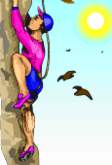Home Search Level 0 Level 1 Level 2 Level 3 Level 4 Level 4Pro Level 5 C/Sing Solo
| Tech terms | Scales | Axioms | Drills | Checksheets | Processes | Prep. lists | C/S terms | C/S tool | Grades | Cramm | Points | KTW | Online |
|
Home Search Level 0 Level 1 Level 2 Level 3 Level 4 Level 4Pro Level 5 C/Sing Solo |
|
|
| Tech terms | Scales | Axioms | Drills | Checksheets | Processes | Prep. lists | C/S terms | C/S tool | Grades | Cramm | Points | KTW | Online | |
Upper Indoc TRs
 |
The TRs 6-9 are for |
The upper Indoctrination TRs are the additional TRs needed in order to be able to run Objective Processes and CCHs. They are numbered TR 6 - 9. (TR 5 does not exist as a drill anymore). TR 6-9 Emphasize physical control and intention. They are done with TR 0 - 4 in.
Definitions:
Intention: 'The carrier wave, that takes the words along with it.'
It's a command factor; a consideration of causatively wanting something to happen and it happens. It is not the words (or particles). It is in other words a theta quality and ability.
 |
Intention can include |
Control, 1. when we say control, we simply mean willingness to start, stop and change. 2. you are stating a greater truth when you say that control is predictable change than if you say control is start, change and stop because start and stop are, of course, necessary to change. You might say the thinking or philosophic definition would be predictable change. 3. positive postulating, which is intention, and the execution thereof.
Name: TR-6, Body Control - 8C.
There are two parts to TR-6
Purpose, Part One: Teaches the student to control and move another body than his own without using verbal communication.
Position: Student and coach are walking side by side. The student is on the right side of coach and has physical contact with coach. Student usually slightly ahead (leading) when walking.
Instructions: The student silently steers the coach's body with his hands on his arms or body. He silently starts, changes and stops coach's body, using physical contact and intention only. He leads slightly by being a foot or so ahead of coach. He avoids walls and obstacles. He has to stop the coach's body, not the walls. Emphasis on firm smooth control and good ARC. Earlier out TRs 0 - 4 are flunked and corrected. Remember: on a physical level Control = Affinity.
Purpose, second part: Teaches the student to control and move another body by giving verbal commands only.
Position: Student and coach are walking side by side. The
student is on the right side of coach, except during turning procedure. No
physical contact. Student usually slightly ahead when crossing the room.
Commands on 8-C, part 2 are:
"Look at that wall." "Thank you."
"Walk over to that wall." "Thank you."
"Touch that wall." "Thank you."
"Turn around." "Thank you."
Instructions: Complete, crisp precision commands. Student, as in any other TR, is flunked for current and earlier TRs out. The coach looks for and flunks the student for hesitation or flub of command, for poor confronting, for bad delivery of command, for poor acknowledgement (ack), for poor repetition of command, and for not handling an origination by coach properly. The student learns to lead slightly in walking across the room. This will be found to have a great deal to do with confronting.
Name: TR-7, High School Indoc.
Purpose: To train student never to be stopped by a person when he gives a command. To train him to run smooth control under any circumstance. To teach him to handle rebellious people. To bring about his willingness to handle other people.
Position: Student and coach walking side by side. Student is handling coach physically in this drill.
Commands: Same as TR-6 (part 2). In this drill student is in physical contact with coach. Student enforces commands by manual guiding. Coach has only three statements to which student must respond: "Start" to begin coaching session, "Flunk" to point out student error, and "That's it" to end the coaching session. No other remarks by the coach are valid for student. Coach tries in many different ways, verbal, covert and physical, to stop student from running control on him. If the student stumbles, comm lags, fumbles a command, or fails to get execution of a command the coach says "Flunk" and they start at the beginning of the command cycle where the error occurred. Coach falling down is not allowed.
Instructions: Stress is on students crisp and accurate performance and his persistence in getting commands executed. Coach gradually toughens up his resistance against student. Give him wins; don't kill him off all at once.
Name: TR-8, Tone 40 on an Object.
Purpose: To teach student how to clearly give Tone 40 commands. To clarify intention as different from words. To start student on the road of handling objects and people with postulates. To obtain compliance with intention and not just rely on spoken commands.
Position: Student is sitting on a chair. Another chair across from him has an ashtray on it. Coach sits to the side on a chair between student and the ashtray (on the other chair) so he can overlook the activity.
Commands: "Stand up." "Thank you." "Sit down on that chair." "Thank you." These are the only commands.
Instructions: TR 8 is begun with student holding the ashtray. He manually executes the commands he gives. "Stand up!"; he lifts the ashtray, etc.
To help, the coach does the shouting steps below with
student. This is usually done in the first session:
(the shouting is normally done in an isolated place.)
First, locate the space, which includes himself and the ashtray but not
more than that.
Second, have him locate the object in that space.
Third, have him command the object in the loudest possible voice he can
muster. This is shouting.
The coach would say something like this: "Locate the space." "Locate
the object in that space." "Command it as loudly as you can."
"Acknowledge it as loudly as you can." "Command it as loudly as
you can." "Acknowledge it as loudly as you can." That would
complete two cycles of action.
When shouting step is completed, you have student use a normal tone of voice with special attention on him getting the intention into the object.
Then you have student separate intention and words. Have the student do the drill, but use the wrong commands: saying "Thank you" while placing in the object the intention to stand up, etc.
Now, have the student do the drill silently, putting the intention in the object without even thinking the words of the command or the acknowledgement. Pure intention! The final step is bullbaiting. The coach says "Start" then anything else he says or does is not valid on student, except "Flunk" and "That's it". Here the coach tries to distract the student, using any verbal means he can think of to knock the student off Tone 40. Physical interference is minimal. Nothing greater than tapping the student on the leg or shoulder to get his attention is allowed. When the student can keep up his Tone 40 and get a clean intention into the object for each command and acknowledgement, the drill is flat.
There are other ways to help the student along the way. The coach can occasionally ask, "Are you willing to be in that ashtray?" and, "Are you willing for a thought to be there instead of you?" The student answers and they continue the drill. The two answers are not as important as the fact that the idea is brought to the student's attention. Another question the coach asks the student is, "Did you really expect that ashtray to comply with that command?"
There is another drill which will give the student a better reality on what intention is. The coach can use this drill three or four times during the training of Tone 40 on an Object. It goes as follows: "Think the thought - I am a wild flower." "Good." "Think the thought that you are sitting in a chair." "Good." "Imagine that thought being in that ashtray." "Good." "Imagine that ashtray containing that thought in its substance." "Good." "Now get the ashtray thinking that it is an ashtray." "Good." "Get the ashtray intending to go on being an ashtray." "Good." "Get the ashtray intending to remain where it is." "Good." "Have the ashtray end that cycle." "Good." "Put in the ashtray the intention to remain where it is." "Good." This also helps the student get a reality on placing an intention in something different from himself. Intention has nothing to do with words and nothing to do with the voice, nor does it depend upon thinking certain words. An intention must be clear and have no counter-intention in it. This training drill, Tone 40 on an Object, usually takes the most time when doing the Upper Indoc TRs, but it is time well spent. The object you use is an ashtray; best is heavy, colored glass ashtrays.
Name: TR-9, Tone 40 on a Person.
Purpose: Teaches the student to be able to maintain Tone 40 under any duress or stress.
Position: Student and coach walking side by side. Student using physical contact with coach when needed.
Commands: Same as TR-6 (part 2). Student uses clear-cut intention and verbal orders on coach. Coach bullbaits to break down the Tone 40 of student. Only coaching commands that are valid are: "Start" to begin, "Flunk" to point out an error, after which they return to beginning of that cycle, and "That's it" to end the training session or for a break. Any other coach statement are bullbaiting to make student come off Tone 40 or stop him.
Instructions: Emphasis on using only the needed amount of physical effort by student; he uses clear-cut unspoken intention as well. Struggles are flunked, since each jerk is a stop. Student must learn to smoothly increase the effort applied quickly to the amount needed to make coach do the command. The exact intention, exact strength needed, exact force necessary, exact Tone 40 are what is important. Smiles, etc. are TR-0 flunks. Too much force can be a flunk. Too little force definitely is a flunk. Anything not Tone 40 is a flunk. The coach can perceive student's ability to place an intention in the coach. The coach will find himself doing the command almost whether he wants or not, if the student is really getting the intention across.
When the coach is satisfied with the student's ability to get the intention across, the coach steps it up and does all he can to break the student's Tone 40. He can use surprise and change of pace. By this the student will learn to have a greater tolerance of surprise and a quick recovery from surprise.
The purpose of these training drills is to bring up the student's ability and willingness to handle and control other people's bodies, and to demonstrate good, cheerful confront while giving another person commands. The drills apply to many situations in life and teaches the student a high level of control under many circumstances.
|
Home Search Level 0 Level 1 Level 2 Level 3 Level 4 Level 4Pro Level 5 C/Sing Solo |
|
|
| Tech terms | Scales | Axioms | Drills | Checksheets | Processes | Prep. lists | C/S terms | C/S tool | Grades | Cramm | Points | KTW | Online | |